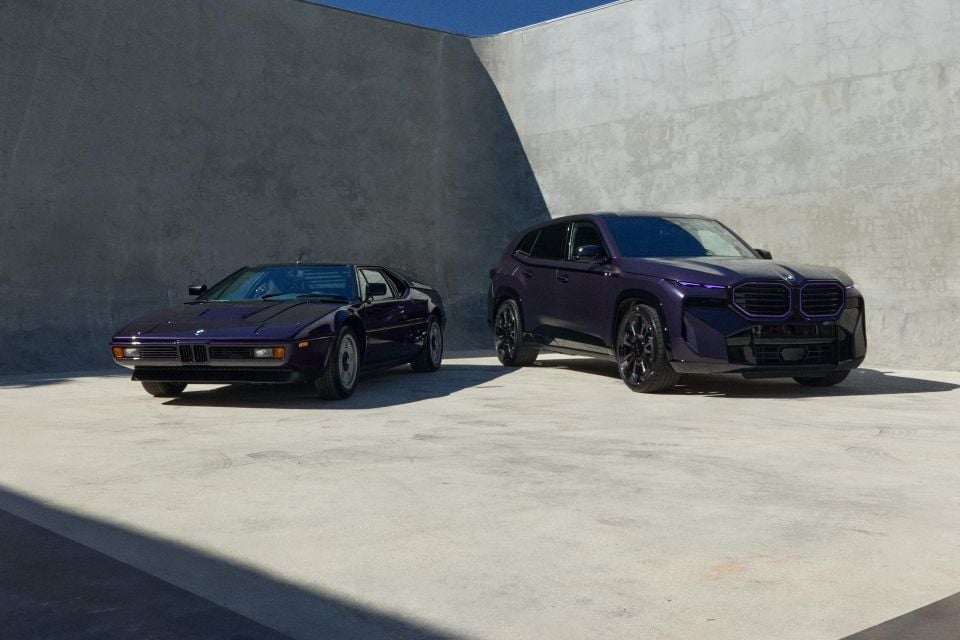

Anthony Crawford
1990 Lamborghini Countach review
6 Days Ago

Contributor
The BMW XM SUV was controversial at its launch due to its brash styling, but now its critics have another reason to dislike it – it was given the green light over a genuine supercar.
That’s the claim made by British automotive journalist Steve Saxty, who has recently published a series of books, titled “BMW Behind the Scenes”, detailing the German brand’s design and styling decisions in the past and present.
Speaking to automotive YouTube personality Joe Achilles, Mr Saxty detailed that BMW was almost ready to put a spiritual successor to the M1 supercar of the 1970s into production, until it was canned at the last minute.
100s of new car deals are available through CarExpert right now. Get the experts on your side and score a great deal. Browse now.


Based on the BMW Vision M Next concept from 2019, ‘Project i16’ was reportedly meant to be a successor to the i8 plug-in hybrid, though with greater performance credentials.
“They got 95 per cent towards finishing a production version of the car,” Mr Saxty said.
“They’ve done the body engineering […] so the idea of this car would have been to take the basics of the i8 and put a four-cylinder, not a three-cylinder engine in it.
“That would’ve been breaking around two years ago [2022]. It was done during COVID.
“But they [BMW] had to make a decision; do we go with that or the XM? Wherever your head is on XM, there’s value in the market in high-end, expensive SUVs.

“At what point does BMW with a sports car brand [M] go with a four-cylinder car? It’s easy to say they should make it, but what would you pay for it, and what would you pay for it with a four-cylinder engine?”
At the BMW Vision M Next’s unveiling five years ago, it was claimed to produce 441kW from its turbocharged four-cylinder plug-in hybrid powertrain, while being capable of accelerating from 0-100km/h in 3.0 seconds and onto a top speed of 300km/h.
When the BMW M1 launched in 1978, it was the first dedicated M car and the brand’s debut mid-engined model, with power coming from a 3.5-litre six-cylinder engine.
The plug-in hybrid i8 became BMW’s second mid-engined car in 2014, powered by a turbocharged three-cylinder engine and an electric motor.

The XM meanwhile debuted in 2022, and became BMW’s second M-only model, also with a plug-in hybrid powertrain but which used a twin-turbo 4.4-litre V8 engine.
Ironically, earlier this month US fashion brand Kith unveiled the XM Kith Concept, previewing a production model which will be limited to just 47 examples – the same number of years since the M1 debuted.
BMW has maintained the XM has design features inspired by the M1, such as its side accent strips, dual rear BMW emblems, and the “louvre structure” of the rear lights.
To the end of November, BMW has sold 124 XMs in Australia this year. That’s more than the Aston Martin DBX (56 units) and Lamborghini Urus (104 sales).
Where expert car reviews meet expert car buying – CarExpert gives you trusted advice, personalised service and real savings on your next new car.
Born and raised in Canberra, Jordan has worked as a full-time automotive journalist since 2021, being one of the most-published automotive news writers in Australia before joining CarExpert in 2024.


Anthony Crawford
6 Days Ago


Matt Campbell
5 Days Ago


James Wong
4 Days Ago


Max Davies
2 Days Ago


Josh Nevett
1 Day Ago


Josh Nevett
19 Hours Ago